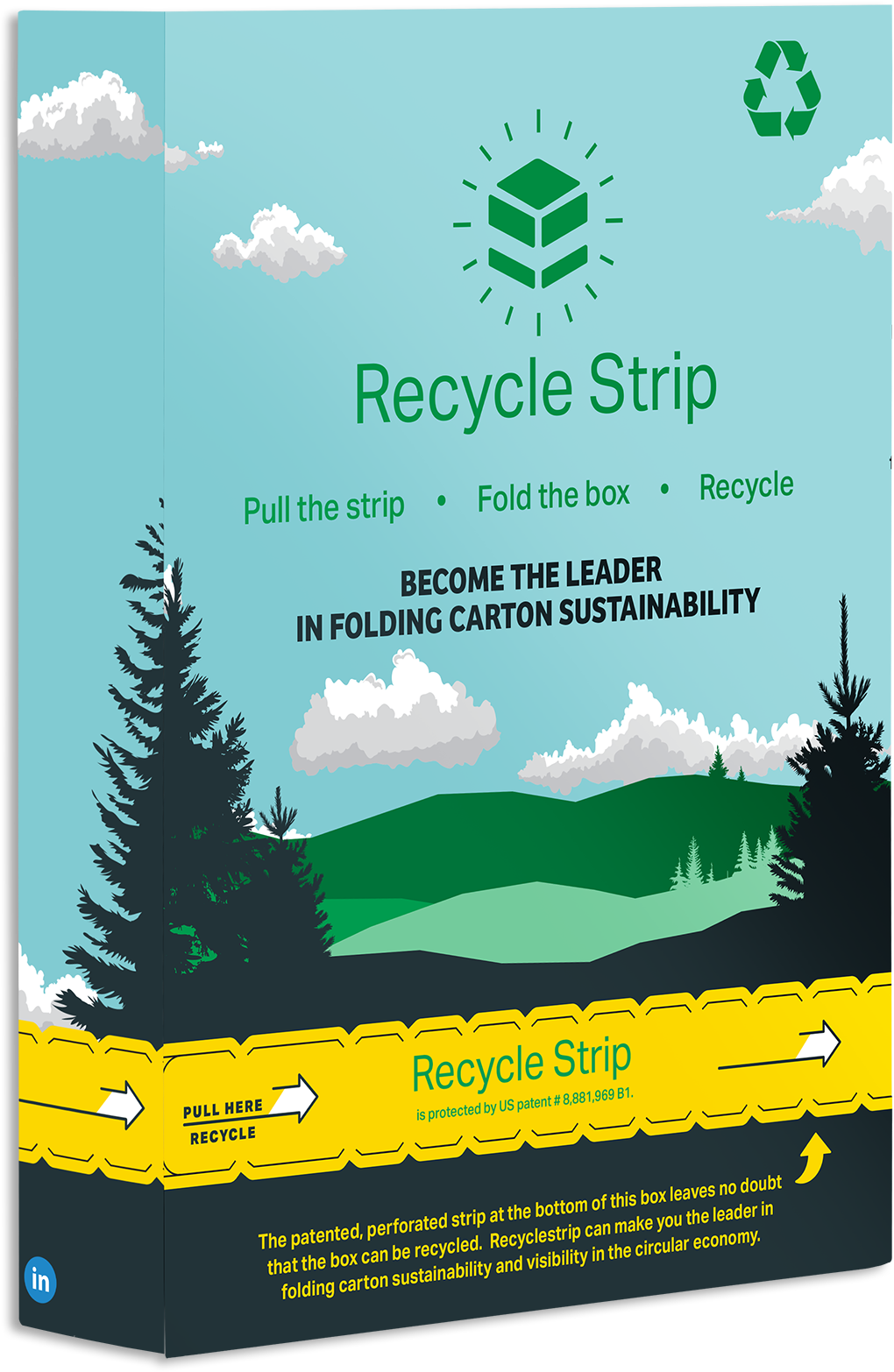So Simple
So Ingenious


1. RIP THE STRIP

2. FLATTEN THE BOX

3. Recycle
Sustainable Packaging for Folding Carton and Corrugated has Hit a Plateau
Be the Agent of Change With This Low-Cost Application
We have become addicted to the convenience of single-use products and consume materials at an alarming rate. Failure to take serious action will accelerate the climate crisis and mass biodiversity loss. Stakeholders today are putting pressure on companies to be part of the solution by dramatically reducing their carbon emissions and embracing sustainable practices like product circularity.
As we transition away from a fossil-fuel economy, paper-based packaging is replacing many plastics as the more sustainable option. Cardboard packaging is attractive because it comes from a renewable resource and is recyclable. With a well-established recycling infrastructure, the potential is there.
Current Recycling Rates
There Is A Growing Recycling Problem
While cardboard recycling rates are higher than other materials, rates have started to fall particularly for residential consumers.
Recycling is burdensome and inconvenient for consumers. Today there is confusion about what packaging is recyclable. Although consumers want to feel good about doing the right thing, hunting for the recycling symbol and physically flattening the box often dampens their enthusiasm.
At the same time, paper product packaging is exploding with the rise of e-commerce and manufacturers are substituting paper packaging–meaning the volume of waste is increasing. This causes more problems for facilities when sorting.
Stakeholders Are Rewarding Leaders In Sustainability And Laggards Are Penalized
- Gen Z are willing to spend 10 percent more on sustainable products.
- Investors are rewarding sustainability leaders.
- Business partners are demanding sustainability and decarbonization standards to do business.
- Increased awareness of greenwashing are pushing packagers to demonstrate how they are making progress on sustainability.
- Upcoming regulations may be costly for companies that refuse to take meaningful steps.
- Extended Producer Responsibiltiy Laws have been adopted in 4 states with more to come and 63% of executives have not yet looked into how EPR legislation will impact their packaging.
- The SEC has proposed added regulations around reporting on ESG claims. (The FOREST Act – “prohibits the importation of any product made wholly or in part of a covered commodity produced from illegally deforested land.)
Companies Must Weigh Trade-offs When Investing In Sustainability
- Often solutions are expensive to introduce into existing operations.
- New technology is often unproven and hard to scale.
- Yet, Recycle Strip uses existing technologies already implemented in current operations. Recycle Strip’s bold presence clearly communicates a package’s recyclability and makes the box flattening process quick and fun.
Recycle Strip Improves Recycling Rates
The eye-catching strip not only stands out on a store shelf but also educates consumers about a product’s recyclability without searching for an obscure recycling symbol. Ripping the strip is fast to eliminate flattening inconveniences and is also fun, which will accelerate positive behavior change.
Cardboard is universally recyclable at facilities across the country so can be standardized and national in scope. Recycle Strip can make a meaningful impact on reducing waste and advancing the circular economy.
Companies Will Be Rewarded For This Visible Effort To Advance Circularity
Consumers will associate companies with Recycle Strip as good stewards of the economy which will increase brand loyalty and revenue–especially among newer generations.
Implementing Recycle Strip demonstrate to ESG investors a packager’s commitment to reducing their environmental impact while improving relations with sustainability-minded business partners concerned with circularity in their supply chain.
Recycle Strip helps avoid future costs that will be associated with tighter future regulation as suggested by new state EPRs and SEC carbon disclosure rules.
Recyle Strip Is An Inexpensive Solution That Can Be Easily Implemented Immediately
It leverages existing perforation capabilities in use during packaging production today. So the cost to add Recycle Strip’s perforation is negligible compared to other costly sustainable actions that require changes to material sourcing, equipment, and operational processes.
It is a low-risk, proven technology that consumers are familiar with today.
